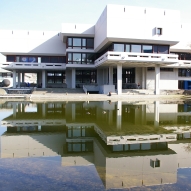Zusammenfassung
Tyrosine kinase inhibitors represent today's treatment of choice in chronic myeloid leukemia (CML). Allogeneic hematopoietic stem cell transplantation (HSCT) is regarded as salvage therapy. This prospective randomized CML-study IIIA recruited 669 patients with newly diagnosed CML between July 1997 and January 2004 from 143 centers. Of these, 427 patients were considered eligible for HSCT and were ...
Zusammenfassung
Tyrosine kinase inhibitors represent today's treatment of choice in chronic myeloid leukemia (CML). Allogeneic hematopoietic stem cell transplantation (HSCT) is regarded as salvage therapy. This prospective randomized CML-study IIIA recruited 669 patients with newly diagnosed CML between July 1997 and January 2004 from 143 centers. Of these, 427 patients were considered eligible for HSCT and were randomized by availability of a matched family donor between primary HSCT (group A; N = 166 patients) and best available drug treatment (group B; N = 261). Primary end point was long-term survival. Survival probabilities were not different between groups A and B (10-year survival: 0.76 (95% confidence interval (CI): 0.69-0.82) vs 0.69 (95% CI: 0.61-0.76)), but influenced by disease and transplant risk. Patients with a low transplant risk showed superior survival compared with patients with high( P < 0.001) and non-high-risk disease (P = 0.047) in group B; after entering blast crisis, survival was not different with or without HSCT. Significantly more patients in group A were in molecular remission (56% vs 39%; P = 0.005) and free of drug treatment (56% vs 6%; P < 0.001). Differences in symptoms and Karnofsky score were not significant. In the era of tyrosine kinase inhibitors, HSCT remains a valid option when both disease and transplant risk are considered.






 Altmetric
Altmetric